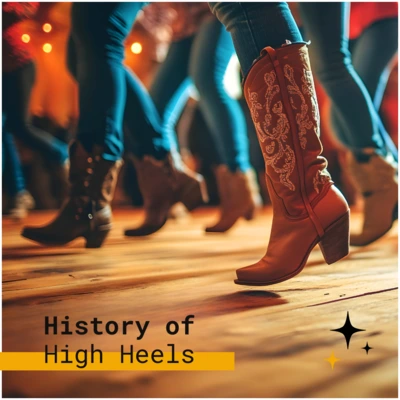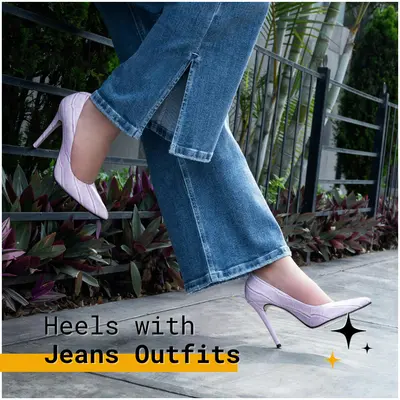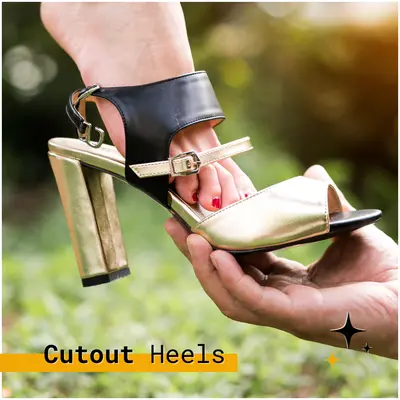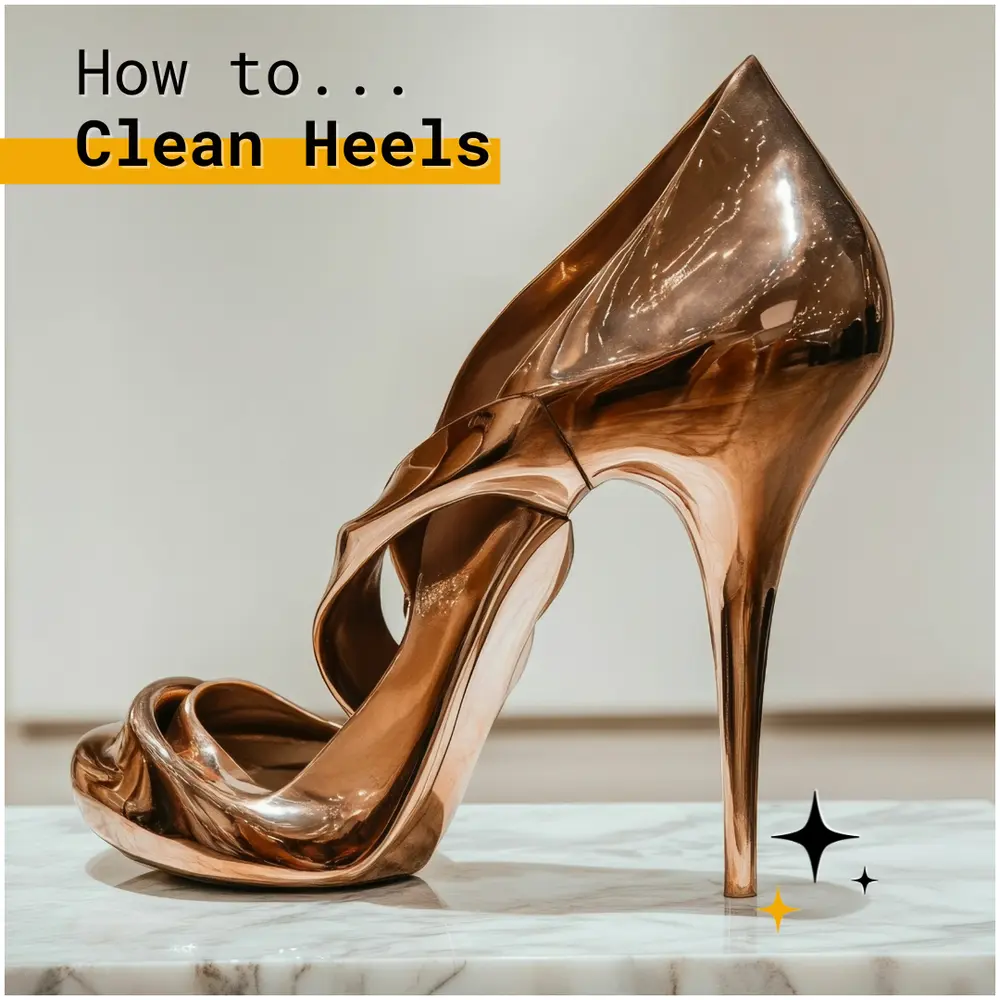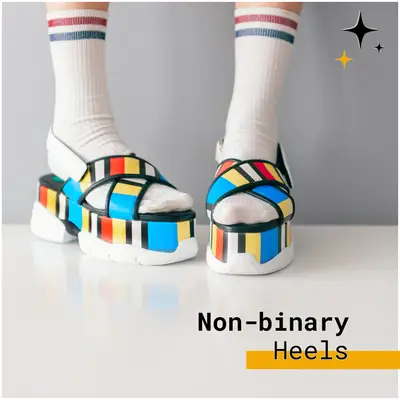– From Function to Fashion
When we think of high heels, we often imagine a symbol of elegance, luxury, and bold trends. But the history of high heels stretches back centuries, and their original purpose was surprisingly practical. Interestingly, high heels were not initially a part of women’s fashion. In ancient times, heels were primarily worn by men for practical reasons. Over the centuries, high heels have transformed significantly, becoming the powerful symbol of femininity and self-expression we know today.
Heels for Men – From Warriors to Aristocrats
The history of heels dates back to the Middle Ages when they were worn by men, especially horsemen, to help with riding. Warriors needed extra stability in the saddle, and heeled shoes provided that balance. These early heeled boots were simple, yet functional. As time passed, heels began to take on an aesthetic role. By the 18th century in Europe, high heels became popular among upper-class men.
Heels represented status, with height signifying social rank.
During this era, men started wearing heels in daily life, though they were still not solely a women’s fashion item.

The Rise of Heels in Women’s Fashion
By the 19th century, as women became more active in public life, heels became an essential part of their wardrobe. High heels were meant to highlight femininity and add height, symbolizing social status. Narrow-heeled shoes became synonymous with elegance and prestige. For aristocrats, these heels were not only a fashion statement but also a symbol of power. With the rise of the shoe industry, heels became a staple of high-society fashion, recognized for their style and sophistication.
At the same time, in the United States, women were carving out their own fashion identity. In the 19th century, cowboy boots became popular – sturdy, practical footwear often associated with Western culture. Unlike elegant slippers, cowboy boots symbolized toughness, strength, and independence. While they had different functions, both styles shared a common purpose: expressing social status and personal identity. The juxtaposition of refined slippers and rugged cowboy boots reflected changing social roles in the 19th century.

Heels as a Statement of Identity – From Drag Queens to Pop Culture
The 20th century saw a dramatic shift in how high heels were perceived. They became a fundamental part of the wardrobe for drag queens, who used heels to express their identities. Gender expression and drag performance had roots in seeking freedom of self-expression. High heels became integral to this display, allowing drag queens to break stereotypes and challenge social norms. Heels, as worn by men transforming into feminine personas, showed that high heels could be much more than a symbol of femininity.
History of High Heels in Pop Culture – Luxury on Display
In the 1960s and 70s, high heels became a part of the fashion revolution and a key symbol of luxury. Brands like Christian Louboutin and Manolo Blahnik gained global fame, offering heels that were both functional and stylish. In pop culture, high heels became a hallmark of movie stars and celebrities.
Seen in films and on red carpets, they embodied elegance and luxury.
This era cemented high heels as not just high fashion but also a representation of independence, strength, and individual style.
Today, high heels are a fashion staple that knows no bounds. Although still associated mainly with women’s fashion, heels are increasingly worn by men as well. Men are challenging stereotypes and boldly expressing their individuality. Heels have become part of the unisex movement, where fashion is no longer limited by gender. Contemporary heels blend elegance, comfort, and flair, and their high price tags and luxury branding make them synonymous with prestige. Yet their popularity among people seeking self-expression shows how footwear can transcend cultural and social boundaries.

Lolita Fashion
Originating in Japan in the late 20th century, Lolita style is a fascinating blend of Victorian elegance, Rococo opulence, and a touch of rebellion wrapped in layers of lace and petticoats. What started as a niche street fashion in Harajuku evolved into a worldwide movement, with substyles ranging from the pastel sweetness of Sweet Lolita to the dark, dramatic aesthetic of Gothic Lolita.
The attention to detail in Lolita fashion is something I can truly appreciate – structured silhouettes, carefully coordinated accessories, and, of course, the perfect shoes to complete the look.
Whether it’s classic Mary Janes, delicate tea party shoes, or even elegant platform heels, footwear plays a crucial role in maintaining the aesthetic. And as someone who knows the transformative power of a great pair of heels, I can’t help but admire how Lolitas approach fashion with such dedication. Maybe I should take notes – after all, if you’re going to dress with intention, why not embrace a bit of theatricality along the way?
What makes Lolita fashion even more fascinating is that, despite its hyper-feminine aesthetic, it has never been exclusively for women. While many associate it with crossdressing or cosplay when worn by men, there are plenty of male Lolitas – sometimes called “Brolitas” – who fully embrace the style as a fashion choice rather than a costume. Some opt for traditional Lolita shoes and dresses, incorporating wigs, makeup, and accessories to achieve the full look, while others experiment with more androgynous or masculine adaptations, like Ouji (often called “prince” style), which replaces dresses with elegant, tailored shorts, waistcoats, and ruffled shirts.
The beauty of Lolita fashion lies in its ability to transform, allowing for personal expression regardless of gender.
And let’s not forget the colors! While Sweet Lolita is a pastel dreamscape of soft pinks, baby blues, lavenders, and mint greens – often paired with adorable bows, lace, and heart-shaped details – Gothic Lolita leans into deep blacks, rich purples, blood reds, and elegant navy, creating a dramatic, mysterious aura. Even Classic Lolita, which sits between the two extremes, embraces warm creams, dusty roses, chocolate browns, and sophisticated jewel tones. The shoes, of course, are just as varied, ranging from delicate low-heeled Mary Janes to bold platforms and even Victorian-inspired lace-up boots.
For someone like me, who understands how the right pair of heels can elevate an outfit, it’s hard not to admire how Lolitas treat shoes as an extension of the overall aesthetic. Whether it’s a perfectly coordinated pastel tea party shoe or a towering, gothic platform boot, one thing’s for sure – there’s no such thing as an afterthought when it comes to Lolita fashion.

History of High Heels: A Timeless Symbol of Elegance and Identity
In summary, the history of high heels tells a story of evolution – from the practical footwear of warriors to the hallmark of male aristocracy, and ultimately to an expressive staple in pop culture. This journey shows how fashion adapts to societal changes and how clothing can become a means of personal identity. High heels, once designed with a wholly different purpose, are now a powerful tool for expressing style and individuality – regardless of gender.
Today's Heelsman Topics – feel free to comment!
FAQs
Who invented high heels?
Persian warriors, believe it or not.
Why were heels for men first?
Height, power, and horseback riding.
When did women start wearing them?
The 1600s, and they never stopped.
Are historical heels different from today’s?
Definitely – styles have evolved drastically.
Will heels always be in fashion?
History says yes!
From noble origins to modern runways, high heels have traveled through time in style. Originally designed for function, they evolved into a powerful statement of fashion and identity.

